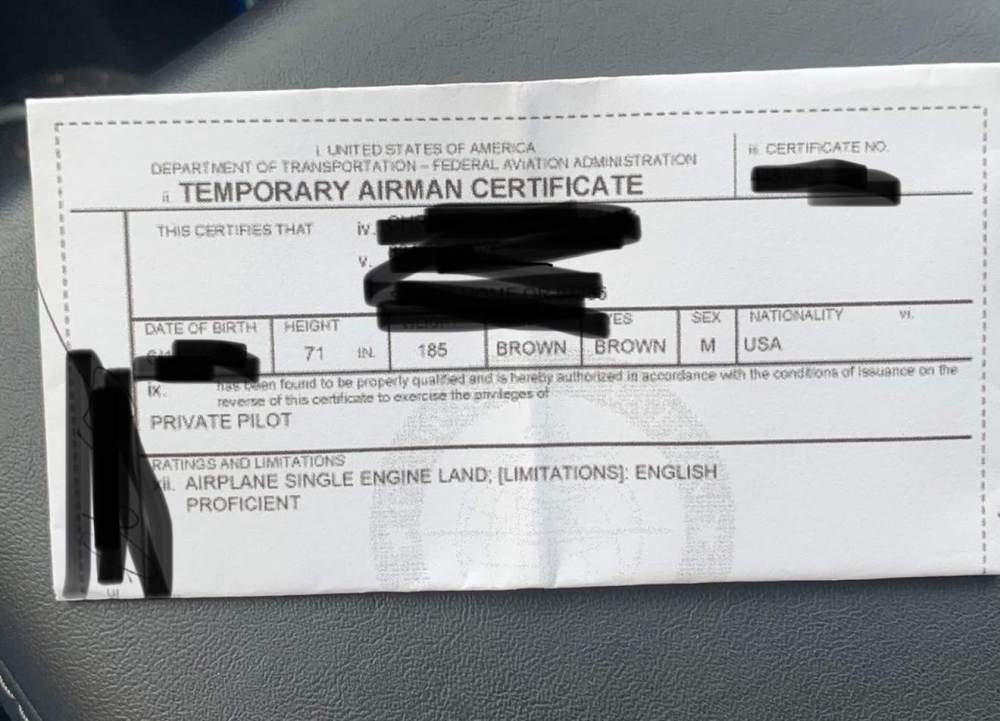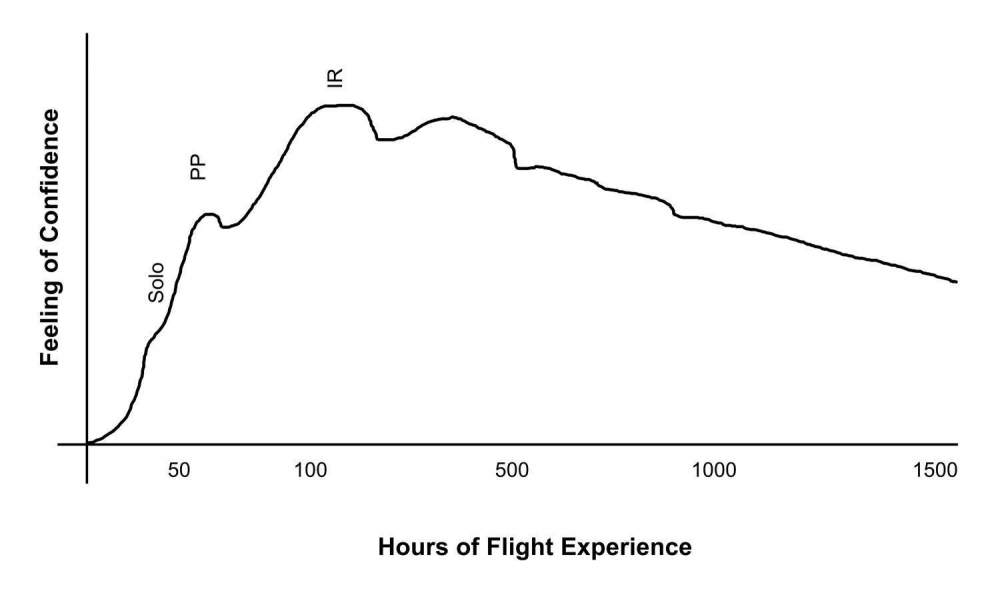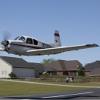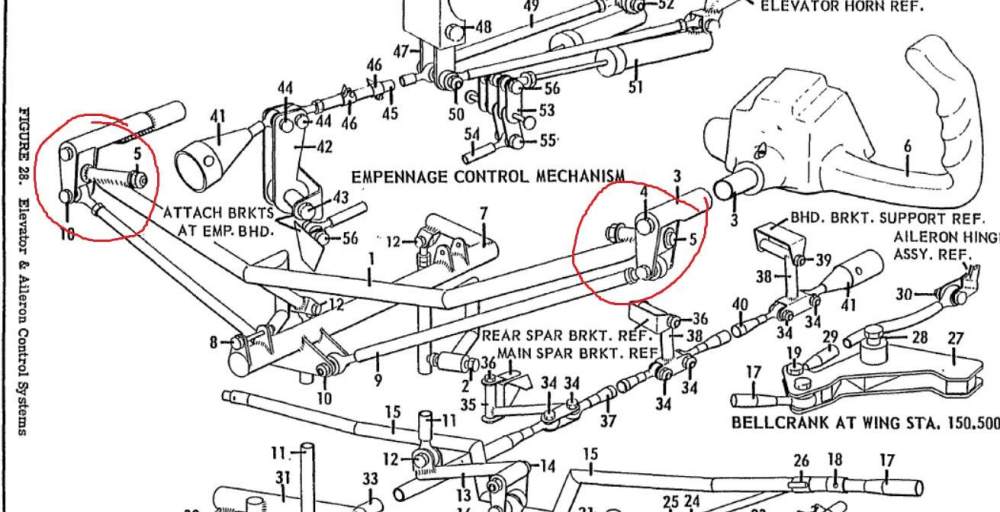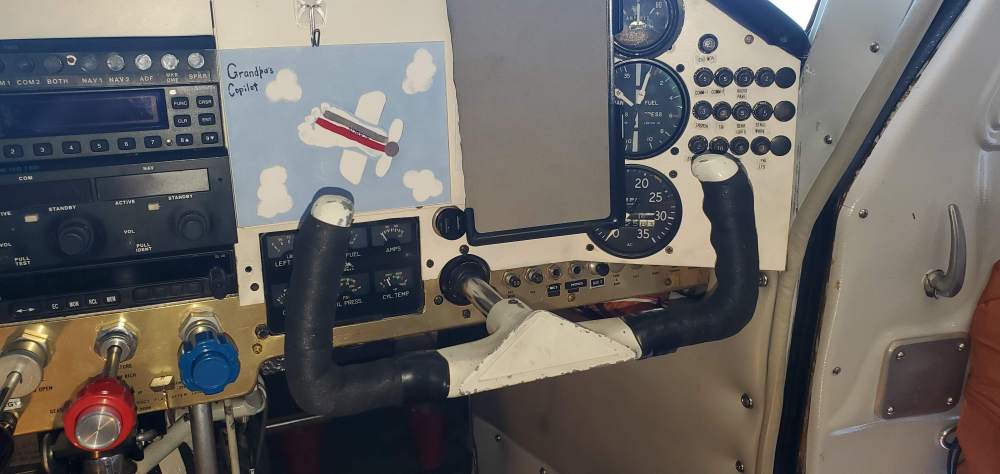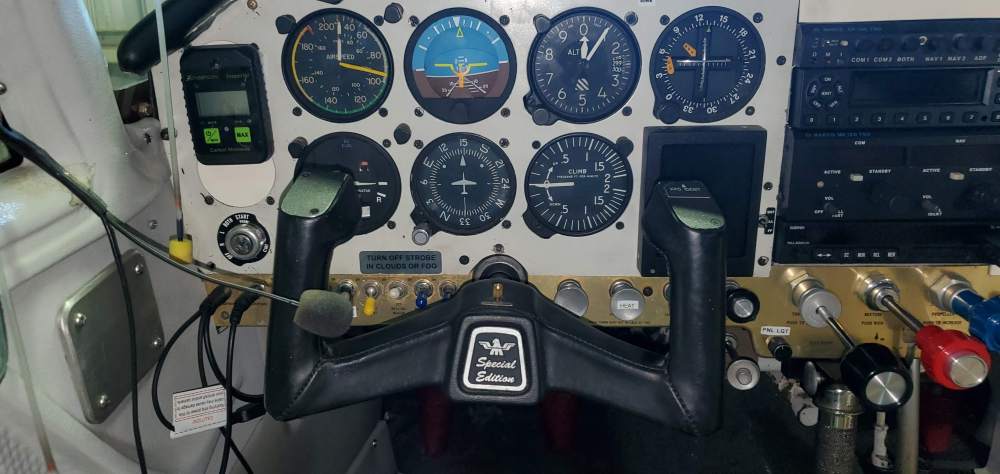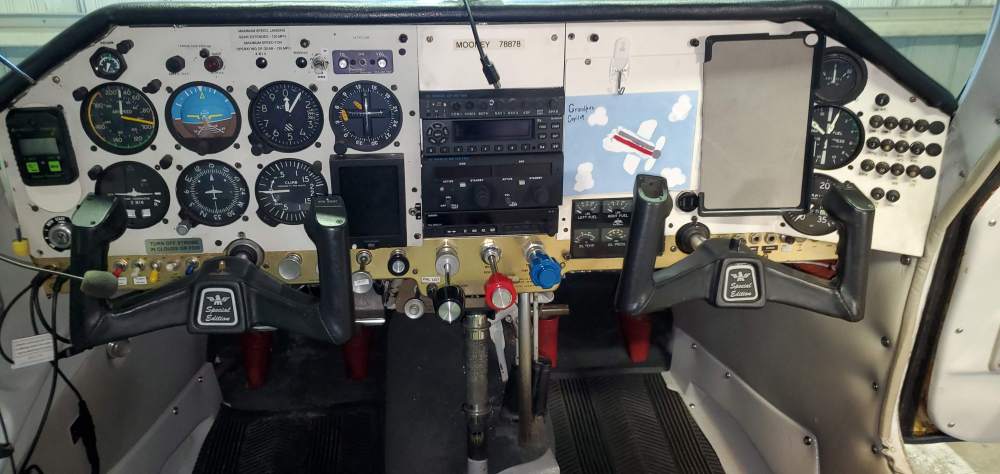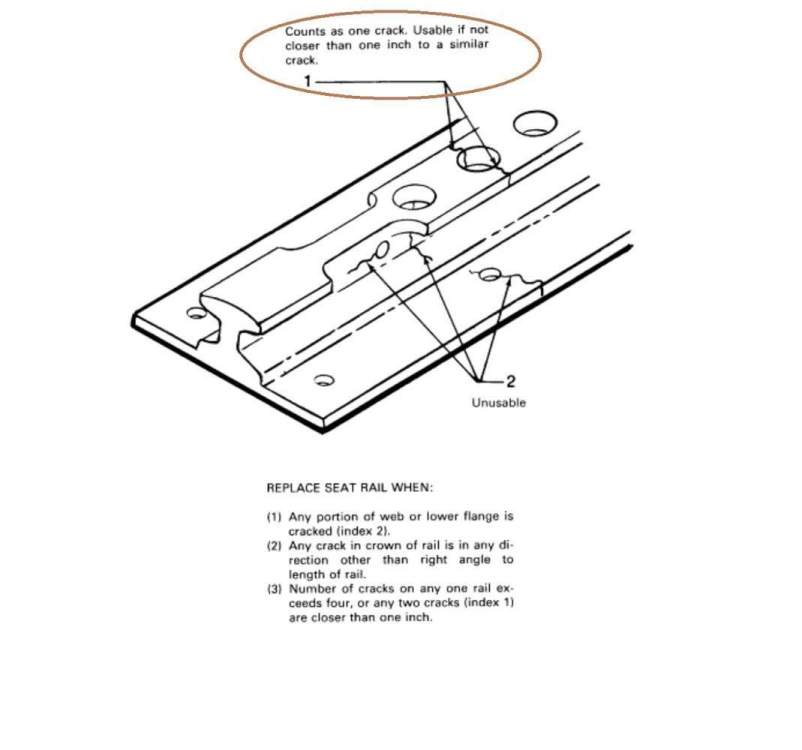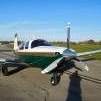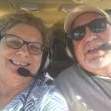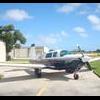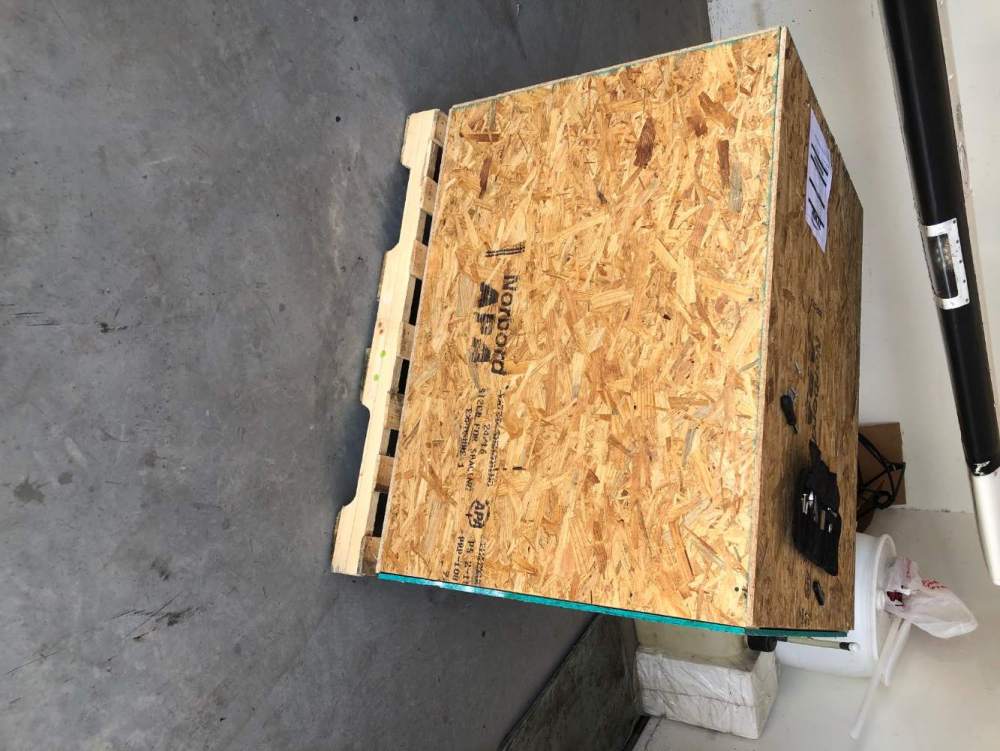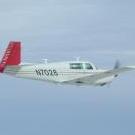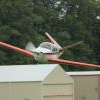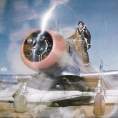Leaderboard
Popular Content
Showing content with the highest reputation on 03/22/2022 in all areas
-
7 points
-
This will be my first post in a long time. I will be shortly rejoining the ranks of Mooney Owners for a few years. Reasons to be discussed at a later date. I felt EXACTLY like @201er and took that feeling seriously. Your self assessment and realistic attitude spells “professional pilot” in my book!! I have done 8-10 hours of recurrent training ANNUALLY, for the last five years, and can testify having been handed the UGLIEST possible flying scenario recently, a serious attitude, acceptance of the risks and dedicated QUALITY training could save your life someday. And @cliffy, your last paragraph in your quoted text above EXACTLY describes the difference between a crash and an EMERGENCY LANDING. The damage to the plane is NOT the deciding factor. Flying it to the ground (and walking away) determines the difference!! Stay safe everyone. Tom5 points
-
Today was a fairly windy and gusty day in Tracy, California. Not unusual after passage of a cold front yesterday. I had two brothers who bought a C model last week and were looking forward to their first day of transition training. Based out of San Jose, I flew my plane over there. It was a little bumpy, but not bad in my plane. I saw their plane in person for the first time. It had not been well taken care of. I checked for an Annual and it was confirmed. It wasn't done by a Mooney Service Center. While doing the preflight the sump valve couldn't be completely stopped from leaking on the left tank. There were no brakes on the right side. Given the conditions I told them it was not a good day to start the training. Instead, I took each of them up in my plane for a couple of times around the pattern and demonstrated handling such conditions. Even with my experience I didn't feel comfortable taking an unfamiliar airplane with people who had never flown a Mooney before up today. I think I was reasonably uncomfortable flying any airplane for my first 1,000 hours. I was uncomfortable flying my airplane for the first 100 hours. But I really wanted to get over that. My skillset really improved with the CFI and CFII ratings, and was honed when I got my ATP in my airplane. I kept learning about the weather by ferrying airplanes between Mooney Sales people. Each flight and enroute weather was different. I flew to most Homecomings in Kerrville and to Oshkosh 22 times so far. And then there has been all the learning that has taken place in my to date 6,603 hours of teaching over the past 28 years. Clarity, I think, comes from experience. You begin to know more about what you didn't know you didn't know. I've been flying 55 years and it never gets boring. In addition to the CFI, CFII, MEI, ATP, Basic and Advanced ground instructor, and CE525S Type rating, I got the Wright Brothers Master Pilot award a few years ago. To further increase my knowledge, I've done the requirements for the Master CFI for the past 20 years (going on 22 this year). Participating in these challenges has brought me better understanding and improved comfort level. The new technology has accelerated that process because it's so much easier to decide when it is safe to go and when it's best to stay on the ground in addition to being just plain fun to use. From my perspective, even if near middle age, you are just at the beginning of your flying adventures. You have more perspective to properly guide your decisions. With that added perspective you are in a position to make better decisions that lead to a higher level of comfort in your flying. Carry on my friend.4 points
-
Some days are magic. We flew with my two sons for breakfast. Nice day, everything worked out well and my landings were great!!! I hope you enjoy the video as much as I enjoyed my time with the boys. Sent from my iPhone using Tapatalk Pro3 points
-
Is it just me? The more I've been flying the less sense of confidence I carry. Reflecting back on over 17 years of aviating, I've been realizing that I had less concern and felt more adept at carrying out a flight the further I go back. Now I don't know if it is more attributable to age or flying experience. Inevitably both progress forward together. Past a certain point in my flying history, I have been seeing a gradual but downward trend in confidence. In the beginning, it is all up up up. You learn something new, you solo, you earn a certificate... you get all these milestones and accomplishments that say "you know what you're doing." However, past a certain point, it seems like it's only the opposite. Something breaks, I have a bad flight, screw something up, lose a friend, read about an accident... Here's a rough sketch of how I feel my overall flying confidence level has progressed over time. Most of the peaks are represented by milestone accomplishments, dips are scares, and a steady overall downward trend ever since. With time it seems that more and more I discover how much I don't know and how much I am capable of screwing up. Now in the beginning, this is something you are entirely unaware of. But, with experience, I discover naive thinking or unknowing mistakes of times past. Carrying this greater amount of awareness is burdensome. It also makes me comprehend slightly better how much I don't know or have the potential to screw up than back then. Or perhaps the skills are fading with time? Back at just a few hundred hours flying time, I was ready to launch in any weather, land on the shortest runways. And I was sharp. Or at least it seemed that way. It always seemed like I could do it, no problem. With time, I'm more and more reluctant testing the edge of my envelope. And it's not for lack of instruction or ratings. I still get regular flight reviews, IPC's, added a rating. Doesn't seem to make a difference. My 10th flight lesson, I probably learned more than in my last 10 flight reviews (or IPC)! Does this happen to everyone? Does anyone actually get more confident as they get older or gain a lot of flight time? I'm not really sure if I have a specific question or a point I'm trying to make. Just an observation. Not sure if it's better to be blissfully unaware or to be burdened with progressively greater awareness that erodes at confidence. Is there an antidote and would I even want one?3 points
-
This is how I learned about It, listening to him tell the story was a little surreal and the pictures are worth more than words. I got my co2 sensor for flight training right after. FYI if I remember right it also happen to a Comanche pilot many years ago and he also survived.3 points
-
I'll come from a different viewpoint: Since I had and recovered from heart failure and also suffered an engine out emergency off field landing - all in the last 4 years (after being out of flying almost 20 years), I've come to realize how short our time is and not to 'waste' opportunities- like flying. Sure, mitigate and prepare as much as we can but, things just happen. I'm thankful each time I get behind the controls knowing I was given a second chance. My heart failure (if not caught in time) would have probably been fatal. I was lucky (my cousin did not catch his, died in his sleep @ the age of 55 - runs in the family). So, I train as much as possible, practice often (weekly in the pattern with ATC). Read, as much as I can about GA accidents and do my best to learn from them. Age gets us all but, I'm doing my best to stay sharp as flying is a diminishing skill if not practiced. I'm encouraged when I read pilots in their 70s, 80s, and 90s are still flying and are still sharp. -Don3 points
-
Confidence increases with skill level. Keeping active in flying and training helps. Don't be complacent about anything in flying Even with 55+ years in this game I still go out and go roundy round at the airport to keep my pattern skills up there. Don't accept sloppy flying. Work hard to make the perfect flight (it will never happen). VFR or IFR it doesn't matter Work at being professional in every aspect of aviation. It all contributes to confidence. Now being older and wiser I don't take the "chances" I once did. No night SE for me In fact I have limited myself to day VFR. Just personal choice on minimums I've got nothing more to prove, I've got all the time in the world to get there so stopping if I don't like something ahead ain't no big deal. Bear in mind that if you are UNDER CONTROL when you touch down (no matter on or off field) you will in all likelihood survive. It happens every day.3 points
-
Anyone have a link to the post accident post where a member lost consciousness and woke up, in a field? Also is Sensorcom still offering a discount code? The C-120/140 crowd are discussing what’s the Mooney guys have already been through, accuracy of the spot detectors etc., and I’d like to give them a link to the accident post and possibly a discount code on the Sensorcom if allowable.2 points
-
2 points
-
Having 2 cylinders replaced doesn't say anything about the engine's history, but it is a concern in regards to replacing 2 cylinders at once--there are definitely wrong ways of doing it, so you would want it done by people who know how.2 points
-
And the luckiest man I've ever met! His story told at the Mooney Summit was amazing, eye opening and the reason I now own two Sensorcons. Oh, I threw away my last "black dot" card as soon as Sensorcon #1 arrived, too.2 points
-
I really can’t rethink what has already been done. It’s history. He has built many engines since the 80’s. He worked at a shop for years where they had a water dyno and did as you describe. Shops that have that equipment charge about $10k more for the engine rebuild. Not everything is ideal, but it comes with a 2 year warranty and I trust him, as he’s built hundreds of engines. I’d rather not have the anxiety of trying to question history right now. I’d rather just focus on hanging it and break-in. thanks for your comments though. You’ve posted tons of valuable info all over MS for a long time. I appreciate you!2 points
-
2 points
-
I’m sure others will jump in, but it kind of depends. The spar is a one piece structure riveted together in subassemblies. It is really a laminate vs one piece of metal…like a modern machined spar might be. Not easy to repair, but some folks have taken it on. Spar cap corrosion is somewhat common and often repaired…so if said tug only damaged that, maybe a reasonable repair. As you get deeper in the spar, the harder the repair gets, until it is cheaper to buy a “new” wing or airplane. Here’s hoping this is a hypothetical and you aren’t going through this as we speak.2 points
-
I am going to state some sort of different things. 1) young and brash is a thing. When I was young and brash - I "borrowed" my step father's Porsche 911 - which even then was an older model. But still a fun car. I was a really a "standard model crazy teenage boy behind the wheel of too much car" at the age of 18. I remember scary the crap out of myself and my friend driving around a "corner" on the CO parkway (Rock Creek Park, MD) on an empty road divided highway designed for 55mph speed limit - and seems like a gradual turn at 55...well I can tell you that at 135mph....those tires were like really gripping and barely holding on. I am here living and breathing today by the grace of God that the car didn't get up to 140mph by the time I hit that turn because I am pretty sure the traction would have given away - but my friend and I lived past 18 years old that day. There was a kid 2 years above my boys age group about 10 years ago - similar scenario - didn't survive their joy ride. So if I had owned too much plane at that age - would I have done some pretty dumb stuff in a plane, skilled, fearless and stupid. Likely yes. 2) Somehow confidence builds over time the longer nothing bad happened in your past, and perhaps the longer you saw nothing bad happening to your friends or people you know. So that's just accumulated luck gives a sense of confidence. That's a natural human reaction of how we psychologically assess relatively dangerous but relatively low probability events.2 points
-
Mike, I think you’re experiencing 2 things at about the same time in your life. First, at 35 years old with a wife and child, you have more to lose than you did at 18. You’re not necessarily losing confidence, but your age and experience are making you question things in ways and for reasons that you never did before. This is very normal. It’s why 18 year olds pursue extraordinarily risking behaviors and middle aged people usually don’t. The second factor involves your experience level. As you gain experience, you start realizing all the things that can go wrong. My guess is that you’re thinking more about the unknowns, particularly things like a catastrophic failure of some component or bizarrely unforecast weather. Before, you didn’t know what you didn’t know. Now you do. The upside to this is that it’s making you a safer pilot. I found your graph very interesting, because it’s so similar to another graph I’ve seen often in the last 33 years:2 points
-
No doubt. It is a fun plane to fly! I am taking a couple weeks off, as the plane is now in for annual lol.. But then it is on to instrument training.2 points
-
Dan Bass is a folk hero. He's done the circuit, TV, AOPA, Mooney Summit. There's videos of him talking about it on youtube as well. But, nothing like hearing it straight from him in person.2 points
-
2 points
-
25 hrs, and four(ish) months. My typical flight is less than 2 hrs. If I’m on a long cross country, I’ll extend the hours until I get home. I cut the filter and pull the sump screen every time. I had an engine shop tell me that even more important is to get a paint filter (that goes over the top of your pail) from Home Depot and screen the oil as it drains. I also use a clean pail and inspect the bottom for shiny stuff after I dump the oil into my haz waste transport can.2 points
-
If you have a vintage Mooney you know about AD 77-17-04 which requires removing the control wheels every 500 hours and inspecting the shafts for cracks with dye penetrant. All M20 control shafts are the same outside diameter. People talk about the newer planes having a thicker shaft, the difference is in the thickness of the wall of the shafts, with the older M20's at 0.04 and the newer M20's at 0.06. The difference in the thickness of the shafts obviously results in a smaller inside diameter. The AD does not apply to the thicker shafts. Every now and then a set of control wheels comes up for sale, offering the opportunity to upgrade your old control wheels and remove the AD. I recently was able to buy a set of control wheels, shafts, and the yoke from a 1996 M20R to put in my M20D. If you have a chance to acquire a set, I highly recommend doing so. I did not think there was much of a difference, and mine actually feel pretty good with the bike tape on them, but once I wrapped my hand around the newer style wrapped in leather I wish I had done it a few hundred hours of flying ago. I want to share a few things that you will need to know if making the swap. The new control wheels mount to the shafts with a bolt going horizontally from 9 o'clock to 3 o'clock. The old control wheels mount to the shafts with a bolt going vertically from 12 o'clock to 6 o'clock. To replace the control wheels and use your old shafts would require drilling horizontal holes in the shafts. Even if you could find an IA willing to sign off on it I feel it would be extremely foolish to add a hole to a shaft that already has an AD to inspect for cracks... Depending on the shafts that you are buying you will likely have to also replace the yoke. The control shafts have a half circle piece on the end where they attach to the yoke. This piece is what allows the shaft to rotate and provides the stops so that it can't rotate too far. The ones coming off my plane have this half-circle piece on top, centered at the 12 o'clock position. On some models Mooney has the shafts that still had this on top of the shaft, and at one point offered these shafts for sale when upgrading control wheels. I do not believe it is possible to get them from Mooney anymore, and it is likely you will have to replace the yoke. On the ones that I got off the M20R these are rotated 90 degrees with the LH side centered at 9 o'clock and the RH side centered at 3 o'clock. If your new shafts are like that you will have to replace the yoke. In this drawing that Mooney put out for replacing the control wheels and shafts you can see circled in red the end of the shaft and circled in blue the piece on the end of the yoke that mounts vertically into the shaft. You can also see it in the parts catalog drawing circled here in red. I had hopes that I would be able to just remove the ends off my yoke and replace them with the ends off the new yoke, that will not work. The ends are held to the old yoke with a bolt through the end, then through the yoke, and a lock nut on the end of the bolt. The new ends have the bolt integrated into them and are held on with a castle nut and cotter pin. The diameter of the bolt on the new ones is too big to fit in the old yoke. You can see the differences in this video. Having established the requirement to replace the yoke, here are a few tips for the rest of the project. Remove the front seats, you are going to be spending a lot of time on your back under the panel, it's much easier without the front seats in the plane. There is not much to replacing the yoke (aside from contorting yourself and laying on your back under the panel) You will have already removed the control wheels and shafts so there are only the two bolts holding the yoke to the tubular frame and the one holding the push rod going to the elevators. Once you remove those you can remove the yoke and put the new one in. (The one off the M20R has a big bob-weight on it. The M20D does not need it so I removed the weight.) You do not have to replace the pheonolic blocks that the shafts go through. In fact in my case the new ones won't even mount to my panel. On my plane they are held in place with two screws at the bottom (about 4 and 7 o'clock) and one at the top (at 12 o'clock). The new blocks only have two at the bottom that don't line up with the holes. I had removed mine and had to reinstall which was a waste of time. Take a look at yours in your plane and the new ones before removing them. After you have the shafts in, the wheels on, and the shafts attached to the yoke you need to connect the push-rods that go to the ailerons. You will most likely have to adjust the length of them by turning the end to make them shorter so that the wheels are level. You will need to take the slack out of the ailerons before doing this. We used the plane jacks with a piece of wood on them under the ailerons to lift them (lightly) so that they sit even with the flaps. After that you can place a straight edge or level across the shafts and line up the wheels with it. Simply slide the bolt through the shaft and the aileron push-rod (no need to put the nut on yet) and then climb back out from under the panel and see where they are at. Go slow, a half turn at a time of the rod end, put the bolt back through and take another look. Continue to do this until you have them level. Once they are level put the lock nut on and snug them down. Make sure you work the new wheels and shafts through their full range of travel to ensure that they do not get caught up on or rub any wiring or the ducts for your vent/heat and defrost. I did this while laying on my back under the panel to make sure nothing was rubbing or binding. Because they are M20 parts your IA "should" sign it off as a minor change in your log book. Mine listed the part numbers that were replaced in the log book entry. (Disclaimer - I am not an AP nor an IA but I did work with mine on this project and this is the process we went through) I am looking forward to now having a push to talk on the RH control wheel and flying with the new control wheels. There really is no comparing the way they feel in your hand compared to the old ones. Old control wheel (wrapped with bike tape to make the summers less sweaty and winters less cold...) New control wheels (Need to make a plate to cover the top of the left side of the right weel)1 point
-
1 point
-
Do you "roll" like that, or is it your assigned "role"? Just busting your butt, Math Guy. ;-)1 point
-
Well at least Dan's airplane is a folk hero... landed without prompting from the pilot.1 point
-
Hank mentioned an important point - trim. You must learn to trim as quickly and accurately as possible. You won't be successful at instrument flying if you are constantly struggling to keep the plane flying straight and level.1 point
-
Update on the rough running. Put a dial indicator to compare lift on the cylinders with good compression with the #1. No difference. We reamed the valve guide and tested compression. Back to 78/80. Ran the engine and started smooth, turned rough after about a minute. RE-checked compression and back down. I've since pulled #1 and sent it off to Zephyrhills aircraft engines. I've known the previous owner (Charlie Meloit) and the new owner LJ Warren since early 2000's and they did fantastic work on a Trinidad I had. Honest and very fair, not to mention meticulous work. I gave LJ the story so far. I'll report his findings. I know when I 'm at my limit and need help.1 point
-
1 point
-
1 point
-
That really stood out! Wondered briefly if it was a frame rate issue or if it was really going backwards… Either way, the rate of rotation didn’t match the speed the plug was going in… Could be a left handed course screw thread… Best regards, -a-1 point
-
On a straight in approach, you should have a standard spot to lower your gear. Check it at least once after that point, and always ALWAYS check the floor indicator on short final.1 point
-
Lack of experience = over confidence = higher accident rate Less confidence = greater caution = lower accident rate1 point
-
1 point
-
That’s a Hoskins wingtip strobe, the Hoskins boxes have been out of production for a couple of decades now, but you can morph a Whelen strobe box to work with it, tou gotta repin the strobe side connector…. the strobe tube can also morph and aeroflash tube by cutting it down enough to fit it inside of the lens, or building up a Whelen tube, and the plastic lens can be replaced with a Piper tail light lens1 point
-
The standard "pinch hitter" advice if you're incapacitated in flight would be to teach your girlfriend to pull the mixture to idle cutoff once on the ground. If she happens to be skilled and/or lucky enough to actually be rolling down the centerline, the airplane will coast to a stop with no brakes on almost any reasonable length runway. If she's not rolling down the centerline - which to be frank is the much more likely case - the brakes won't matter, and it's more critical to shut down the engine anyway. Also, don't rent a Cessna for commercial maneuvers. An M20J is a great platform for every commercial maneuver in the ACS. I can understand why renters might want to minimize time in a complex aircraft for commercial training just because of the expense. But if you already own the airplane, it's a no-brainer to just use it.1 point
-
Caruso, this is not an AD. it was never an AD. It was about to become an AD, but TCM and the FAA were talked down from it. it is a "Critical Service Bulletin"1 point
-
With supervision of AI I replaced the sensor with a new stamped copper gasket…I didn’t take a pic of the new sensor, but it had a ridge allowing for perfect centering of the stamped copper gasket…the second picture shows a loosely fitting copper gasket1 point
-
You can use a split switch and many people do it now. Unfortunately I do not have a good recommendation for one. To avoid noise attenuation you need to have the lights ground at the battery bus and not right next to the lamp on the airframe.1 point
-
I started with the turbo cool down method but have since moved on. I think it's probably as cool as it's going to when exiting the runway. I've been back and forth over the years, but the GAMI guys swayed me eventually.1 point
-
Timing is everything… My CO alarm’s battery is dying… and it is giving off the dreaded beep…. Beep… beep… (other brand, not sensorcon, bought just prior to sensorcon becoming so widely spread in our community…) Let’s invite @DanM20C to stop by… See if there is a sensorcon update… Dan has made it a mission to bring awareness, and stamp out some of the OWTs, related to CO poisoning… Dan is also a great Mooney CFII… Best regards, -a-1 point
-
I have not lost confidence, but I am much more circumspect than I used to be. Especially in non-transport category aircraft.1 point
-
1 point
-
1 point
-
1) Age is everything…. At one end, you have sooooo many years to go, nothing is going to take them away… At the other end… you have so few years left, you fear missing out if things get cut short… 2) Level of responsibility, number of people depending on you, loads your boat as well…. Fly in crummy weather, have the iPad bounce off the ceiling, wonder how you misjudged the weather that bad…. (Stuff that weighs on your confidence) 3) The more you know… every little detail about every machine part holding your engine together… you have to get good at stats to keep the equipment failures in perspective…. 4) The more you read about other people’s machine failures…. Like a Bravo, flown by intelligent people, on an IR flight plan… snaps the wing in two places and falls to the ground…. Can really weigh on your machine confidence… 5) Anyone close to you have Health issues… people in your cohort having heart-attacks? 6) Is all of your hardware working properly? Continuous surprise mechanical issues can really bring you down… Congratulations 201er… 1) You have proven yourself to be a human being… 2) Remember humans continuously make mistakes… 3) Never let up… 4) Never take things for granted… 5) Always have plan B and C… 6) See if @mooneygirl has any insight… this sounds like a question for her…. 7) find out what is killing your confidence, and do more of what builds your confidence… it would be uncomfortable to live in fear… Fly on! Best regards, -a-1 point
-
More details needed. What engine are we talking about? How many hours and years since overhaul? Has the plane been sitting a lot? Or has it been flown a lot, by someone who doesn't mind the temperatures?1 point
-
1 point
-
1 point
-
The gasket surely didn’t crush the right way… Great pics Larry! Proof that Lycomings don’t have to leak oil… they just have soooo many opportunities to leak oil… Best regards, -a-1 point
-
@Kerry_PDX Did you ever find a mechanic? I heard back from someone at KSFF and they had two recommendations of mechanics/shops, but did know if either had Mooney experience. One was Joe Arcuri who apparently is an independent mechanic. I found LinkedIn Contact info by Googling "Joe Arcuri KSFF" Other recommendation was Western Aviation that has several mechanics on staff. If you need to get a real Mooney guy, closest one would be the in Coeur d'Alene.1 point




